The Art of Marbled Paper: Dynamic Fluids in Flow
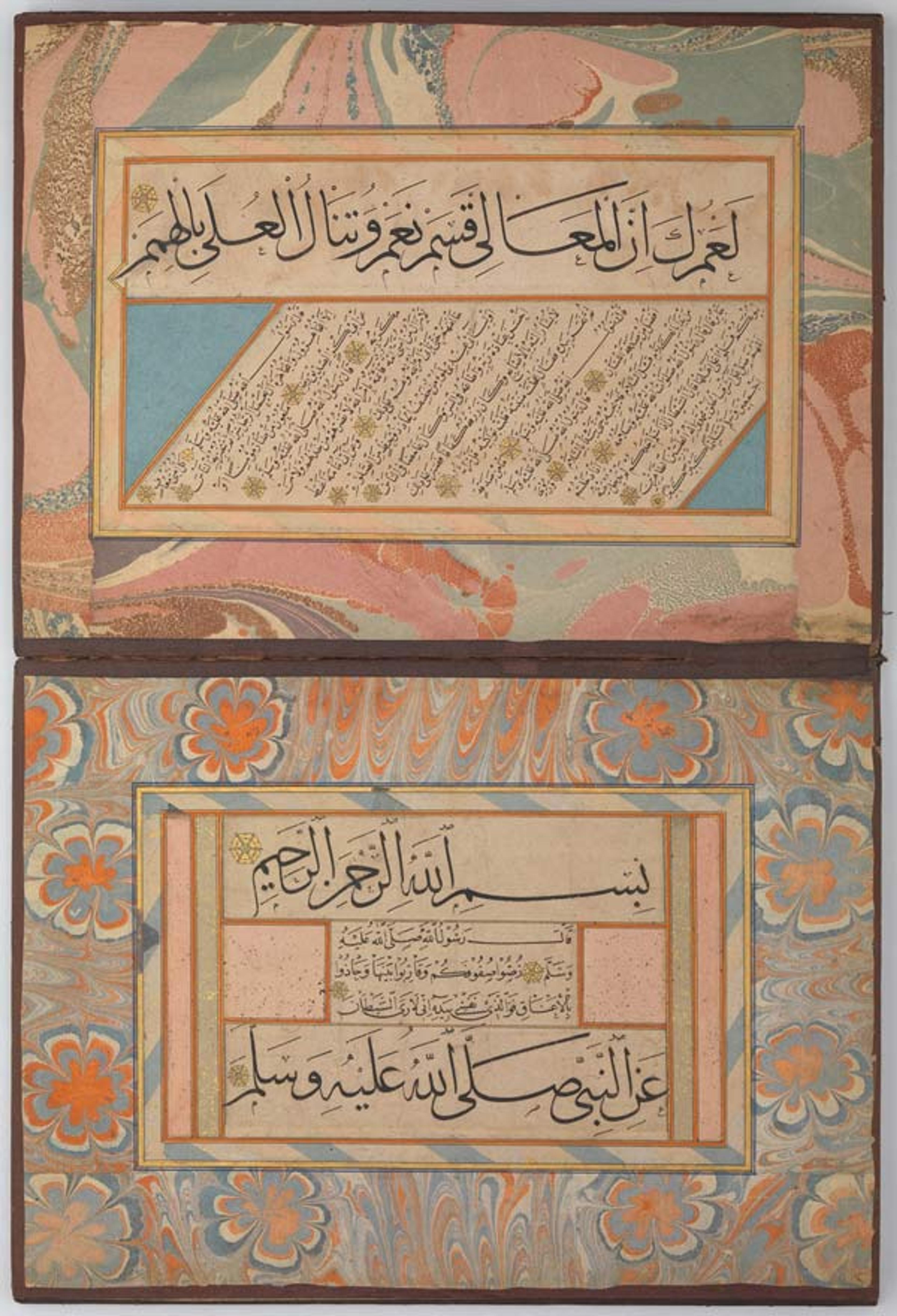
Shaikh Hamdullah ibn Mustafa Dede (d.1520). Folio 5r and 4v from the Album of Calligraphies Including Poetry and Prophetic Traditions (Hadith), ca. 1500. Turkey, probably Istanbul. Islamic. Main support: ink, watercolor, and gold on paper; Margins: ink, watercolor and gold; marbled paper; Binding: leather and gold. The Metropolitan Museum of Art, New York, Purchase, Edwin Binney 3rd and Edward Ablat Gifts, 1982 (1982.120.3)
«This album contains ten dazzling pages of calligraphic samples written by Shaikh Hamdullah ibn Mustafa Dede, one of the most celebrated Turkish calligraphers. Designed and assembled with great sensitivity to the creation of directional visual energy, the album's complex borders of marbled and dyed papers honor, wrap around, and frame magnificently fluid calligraphic samples. Each page is constructed with a structurally similar layout: large, horizontally placed thuluth or muhaqqaq script serve as headings, while lines of a smaller naskh script are set below, running either horizontally or diagonally. On some pages, small floral medallions are painted in gold, each petal containing green, blue, and red dots, with organic glazes of orange-red pin pricks impressed in clusters of three.»
Working from the inside out, quiet simplicity rests in the thin, rectangular dyed-paper strips closest to the calligraphy, bordered by exquisitely crafted cut-and-pasted strips that create the striped, diagonal borders. Each alternating and often complimentary color of the stripe is butt-joined to the next with microscopic overlaps seen only under magnification. The complexity of the designs grow as the viewer's eyes travel outwards into the borders of marbling.

Folio 1v and 2r from the Album of Calligraphies Including Poetry and Prophetic Traditions (Hadith)
Marbleized paper, known as ebru, which translates to "the art of clouds" ("cloud" is ebr in Turkish and abri in Persian), has a long tradition in Turkey and came to be much favored for calligraphic work. The marbling used for the outer borders throughout this album is stunning in its variety of shapes and magnificent display of both organic and inorganic colors and bold rhythms. The patterns are the result of color floated on the marble bath (a viscous solution of carrageenan moss/algae) and then carefully transferred to the surface of the paper. Delicious and intense pink, orange, yellow, blue, and orange hues swirl and flow into and around each other to create blossoming flowers, traditional combed peacocks and getgels (a series of combed parallel lines bisected by another series of combed parallel lines that run in the opposite direction), and sprinkled and speckled stone.

Two close-ups of the ebru used for the outer borders of folio 47v. Sultan `Ali Mashhadi (ca.1440–1520) and Farid al-Din `Attar (ca. 1142–1220). Mantiq al-tair (Language of the Birds) (detail), ca. 1600. Iran, Isfahan. Islamic. Opaque watercolor and gold on paper; H. 12 7/8 in. (32.7 cm) W. 8 5/16 in. (21.1 cm). The Metropolitan Museum of Art, New York, Fletcher Fund, 1963 (63.210)
What is it about marbling that has such a universal appeal? Perhaps part of its mystique is related to the indispensable and elemental role that water plays in the process of its formation, and the rhythmic beauty of the fluid dynamics in which the artist both participates and yields to in its random outcome.
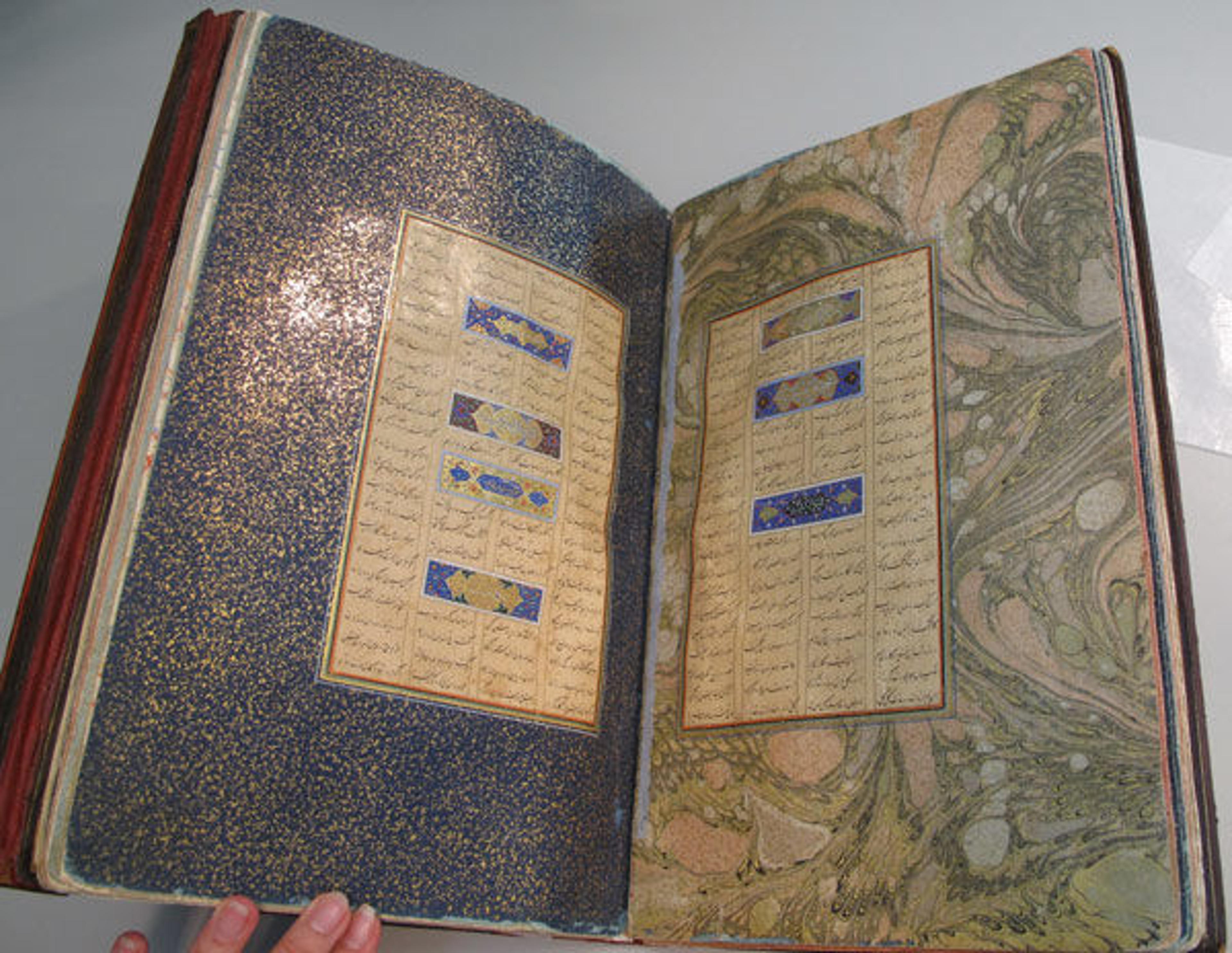
Selected works on marbled paper are available for full exploration on our touch-screen display in galleries 455 and 456, or in the Kevorkian Study Center touch screens in gallery 458. Folio 26v and 27r from the Mantiq al-tair (Language of the Birds)
The margins of folios in this manuscript of Mantiq al-tayr were lavishly decorated by Safavid artists. Some of them, such as this one, are embellished with marbled paper and sprinkled gold leaf. This page combines extravagant Safavid marbled margins with finely penned nasta’liq script of the Timurid period. The magnificent marbling demonstrates the liquid beauty of wave patterns and subtle gradation of colors that were intended not only to embellish the calligraphy but also enhance the reader's aesthetic experience. Reminiscent of Japanese suminigashi, but taken to higher levels of complexity, one can imagine the spread of marbling techniques from China, where it is now thought to have been invented, reaching Central Asia and Japan.
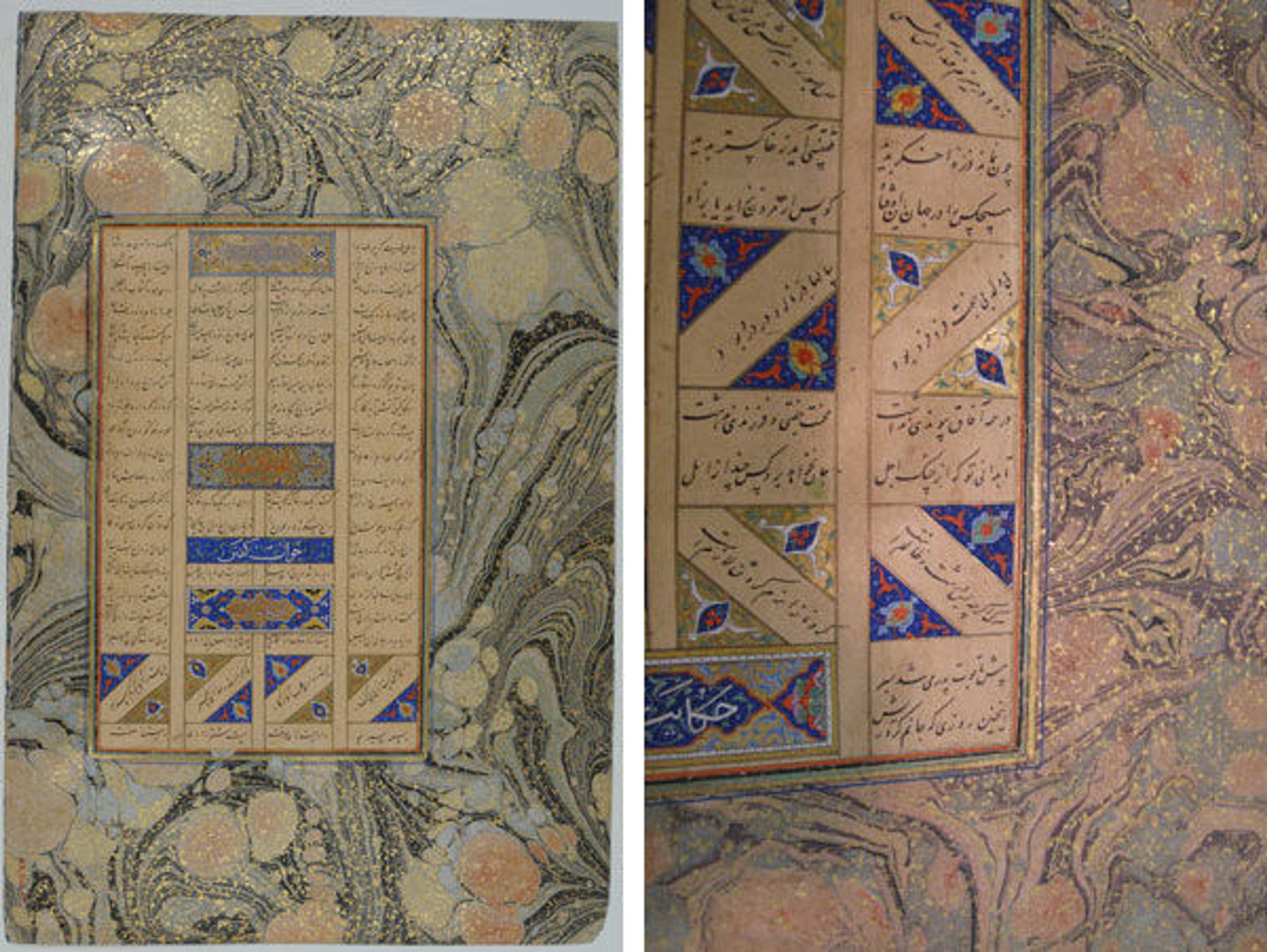
Folio 47v (left) and 34v (right) from the Mantiq al-tair (Language of the Birds)
Ebru masters enjoyed celebrated stature within the hierarchical framework of artists and craftsmen. For many centuries, artists in Persia, particularly those involved in the production of books, had enjoyed official patronage. This tradition also became established in Turkey and India, where artists and craftspeople set themselves up under the authority of sultans who provided a brilliant court and active encouragement; calligraphers, illuminators, painters, bookbinders, and gilders all contributed to the decoration of books. In the fifteenth and sixteenth centuries, the cities of Herat (Afghanistan) and Shiraz (Persia) exported manuscripts to Turkey and even India, where their painted albums enjoyed great popularity in the seventeenth century.
Whether simple or sophisticated, marbled paper—named as such because of its imitation of the vein sequence found in colored marble—has always been the product of great imagination and skill on the part of the marbler. Marbled papers find their way into many facets of the book arts—from the paper onto which graceful calligraphy will be penned and incorporated into a decorative border or inlay, to endpapers, end leaves, and paste-downs in bound manuscripts.
Handmade marbled papers are made one sheet at a time in the following manner: a bath of gum (usually tragacanth) or algae (carrageenan moss) is prepared, the colors for the pattern are sprinkled and dropped upon this mucilaginous dense surface, and patterns are made by combing or some other means of regularizing the design. The paper is then let down carefully into the marbling bath and the design is transferred.
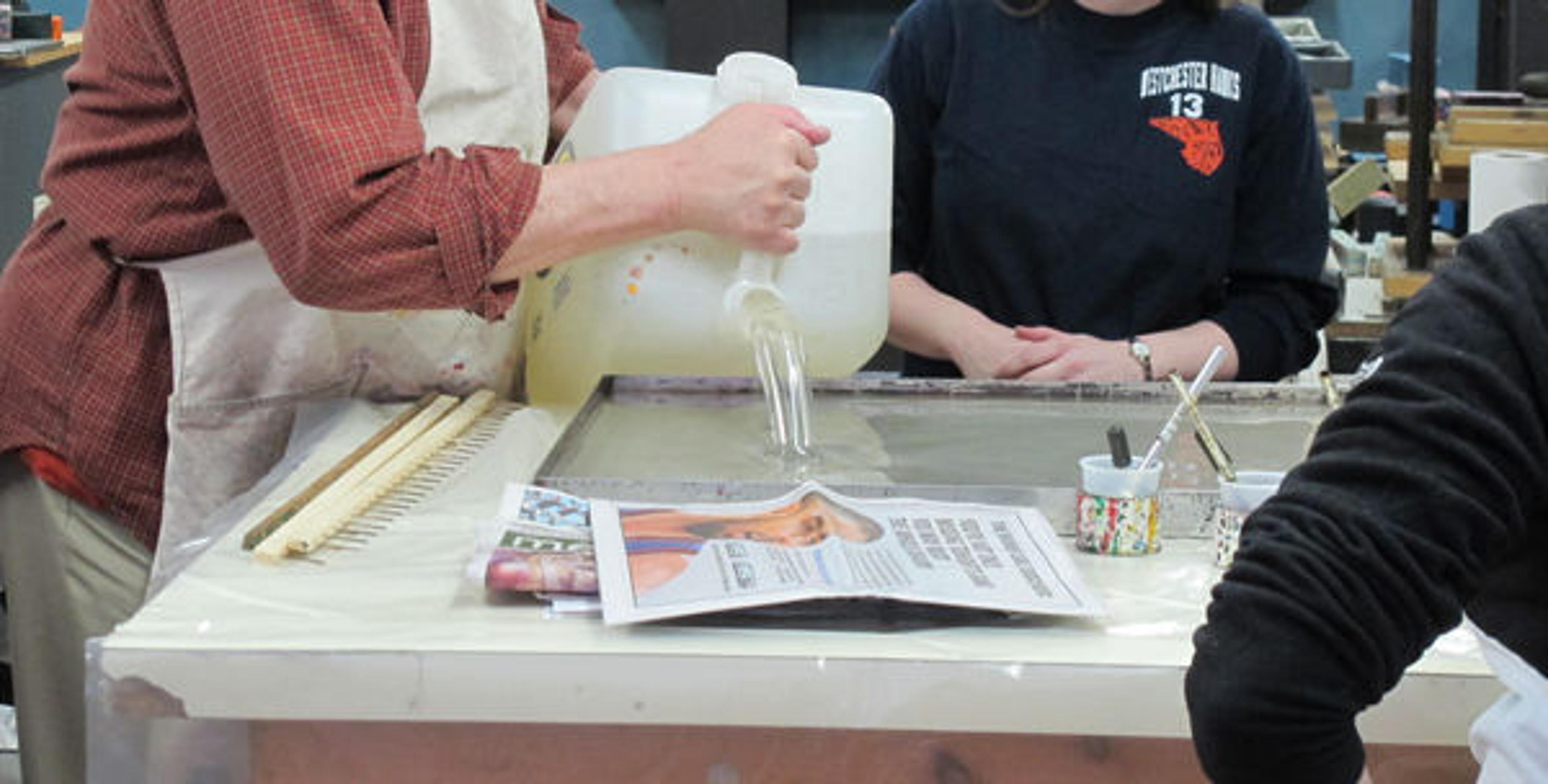
The viscous carrageenan bath is prepared
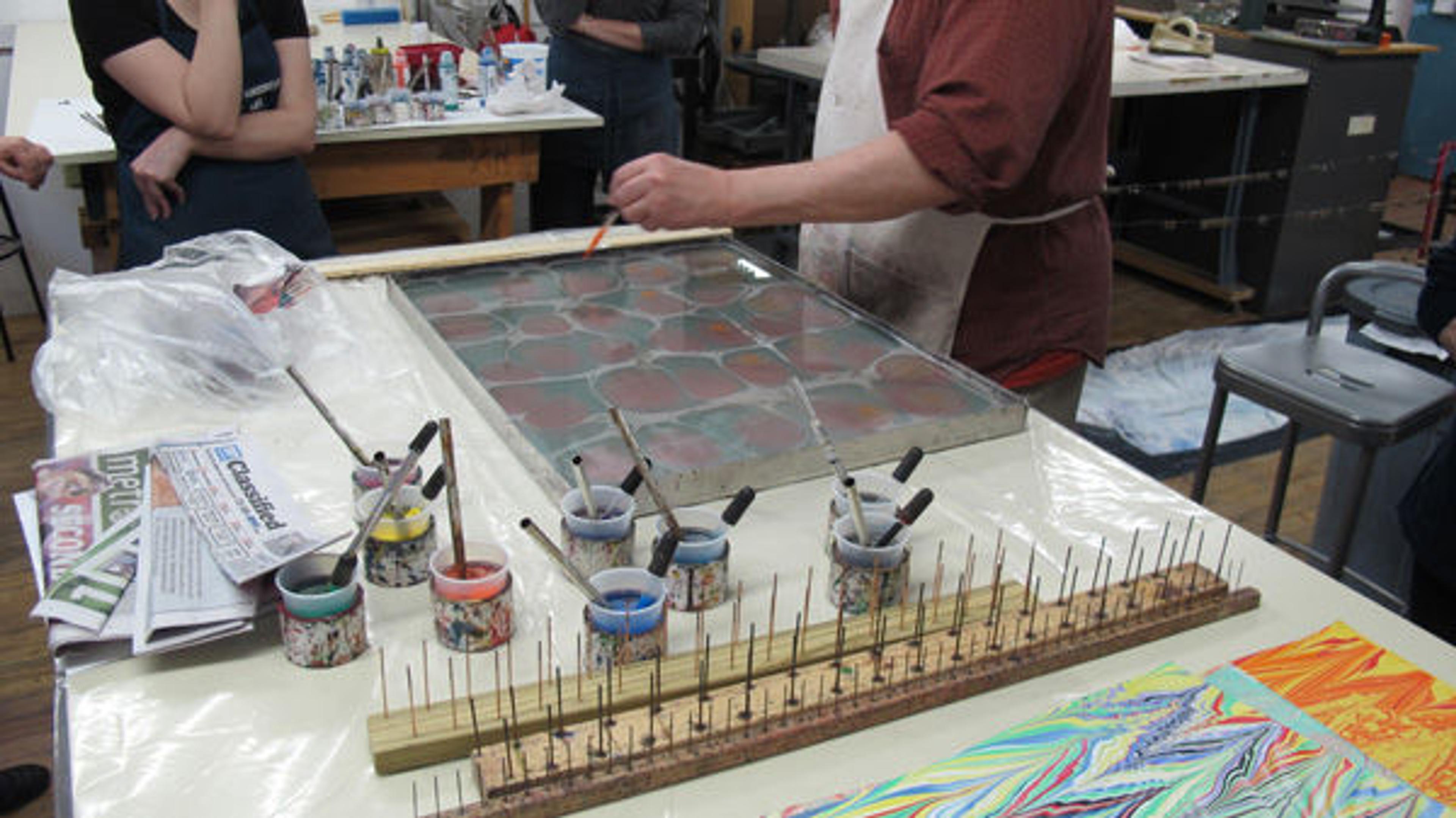
Dispensing the colorants onto the surface of the carrageenan marble bath
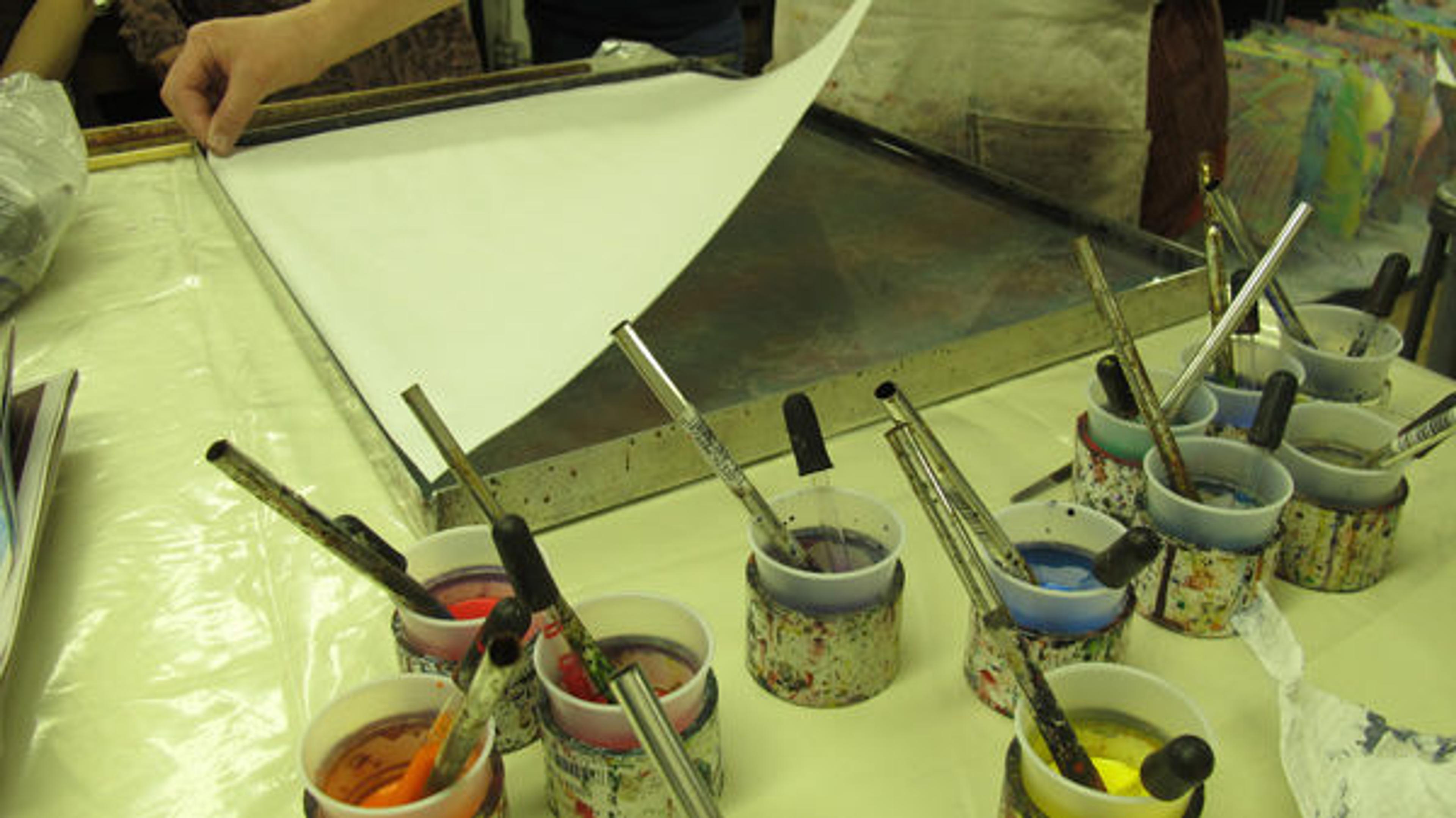
Carefully laying down the prepared alum-sized paper to transfer the marbled design
In the Deccan, a particularly original form of marbling developed: pictures composed of mixed media that incorporated marbling and ink drawing, highly skilled, technical masterpieces utilizing positive and negative stencil methods that left the viewer amazed by their precision and inventiveness. A very rare technique with few examples known to exist today, these artistic curiosities continue to fascinate and bedazzle viewers. Take advantage of the rare opportunity to feast your eyes on a number of marbled images in the gorgeous exhibition Sultans of Deccan India, 1500–1700: Opulence and Fantasy, on view through July 24, and come see if they work their charms on you.
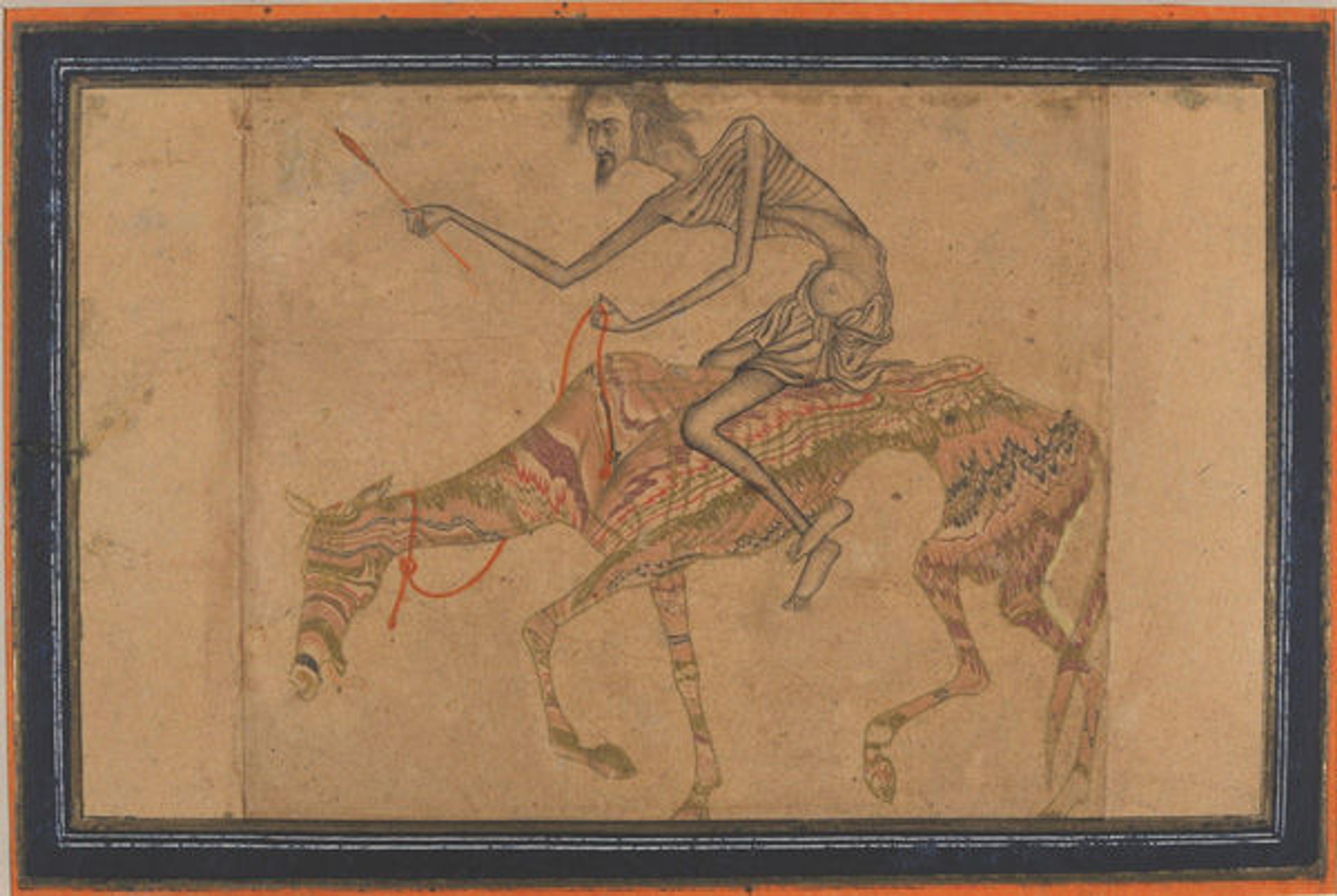
Emaciated Horse and Rider, ca. 1625. India, Deccan, Bijapur. Islamic. Ink, opaque watercolor, and gold on paper; marbleized paper. The Metropolitan Museum of Art, New York, Rogers Fund, 1944 (44.154)
Yana van Dyke
Yana van Dyke is a conservator in the Department of Paper Conservation.